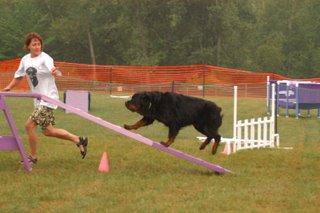
Last week I spent three days painting the main living area of a house. Since I had their entire upstairs in disarray, Mom took her 16 month old and 5 year old boys into the basement. Three beautiful, temperate spring days spent in the basement, where mom watched TV and sewed curtains. Each time I went down, the kids were watching TV with her, or the older one was playing video games. Apart from some forays into suburbia in the SUV, fat Mom and her two pale little boys were in the basement. (Note to self -
really hope some of my clients don't stumble across this blog!) Three gorgeous, spring break days spent in a basement? No wonder they were pale, fat and soft! I don't think this is an uncommon scenario. Ironically enough, Mom was a middle school teacher, and the house was fairly devoid of books. Well, that's a whole 'nother topic.
The newer subdivision was mostly populated with younger families, it seemed. Lush, sterile lawns in neat little squares fronted every house. A park-like area common area was more uniform green grass, a clean little sand box and playground set, where few kids played.
Where's the dirt? The bugs, errant wild grasses and flowers and trees? What connection to the natural world do city and suburban kids have, really? No, I'm not counting getting suited up in protective gear and playing sports. Or watching the Discovery channel.
Understanding the complexity and human connectiveness of the natural world is surely crucial to...I don't know, a holistic, broad knowlege of how to classify and conceptualize surroundings. How many kids - or adults, for that matter - really understand where the produce in the supermarket comes from? Or what the artificially pinkened, bloodless packages of shrink wrapped meat used to be? Or that it's no "sadder" that the family cat kills a baby bird than the family eating factory chicken, or veal. Or that dandelions are really pretty, not messy intruders that must be spritzed with weedkiller. Or that if you lift up an old log, there's a whole societies of interesting bugs, living complex and important lives under there. Where's the sense of wonder? Any more, these things elicit an "eww, that's gross." How sad.
Sometimes I get the impression that vast numbers of kids are being taught that wild animals and bugs are dirty and dangerous. OK in picture books or on TV, but not in our back yard! What implications this has for environmental consciousness in future generations, one has to wonder...
I read in the NYT a while back of a theory - that ADD in kids is, somehow, connected to alienation from the natural world. Some studies at a university in (I think) Illinois are showing that dragging kids away from their various screens, and getting them regularly exposed to the real, "natural" world markedly reduces attention-deficit symptoms.
And, it is fairly well accepted that kids who are in touch with dirt and animals from a fairly early age have better immune systems and fewer allergies. (Seems like half the people I know have "allergies" to one thing or another!)
OK, I have gone off in too many directions. It's 3 am, forgive me.
All I can say, is I am glad I grew up largely rural. I've milked cows and goats, helped with the slaughtering & preparing of poultry, been stung by bees and stinging nettles and jellyfish, walked barefoot through sunwarmed cow plops, planted and watched gardens grow, and to this day still turn over logs to see what bugs and beasties are living lives under there.
And, I think more kids should be allowed to get dirty and explore. They would be happier and healthier.






















